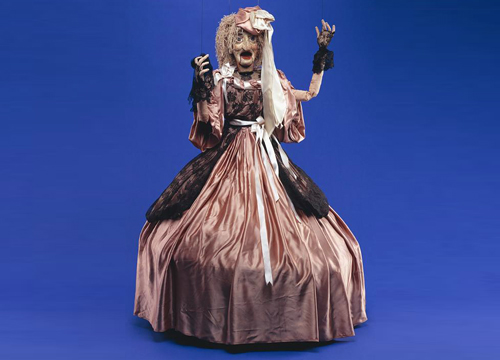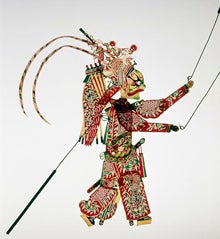
By Mark Branner, University of Hawaii, Manoa

I have the great privilege of teaching an introductory college-level course on puppetry. Even though it is an introductory course, it is actually classified as an upper division course, which means that I generally have juniors and seniors straggling in, looking for an easy “basket-weaving” escape. There are even sniggers from some of the participants when I ask them why they are in the class. This is all pretty understandable. Just put the words together: “College. Puppets.” Already it feels like a bad Saturday Night Live sketch. No, we’re not saving the world (or destroying it) through biomedical engineering. We’re not planning a manned mission to Venus. We’re studying puppets, for crying out loud. What’s the earthly value in that?
I tell them that the class should serve as a tiny rowboat for our venture into the virtually unknown (by most) ocean of puppetry. We hop into this Lilliputian-sized vessel and push away from the dock, expecting to quickly reach our destination (a “fun” class, an easy “A”). However, we soon find that we are surrounded by deep water with no land in sight. We are bobbing about the top of a terrifying abyss, holding on to this tiny dinghy-like introduction.

On the first day of class this analogy makes absolutely no sense. But then, with the help of the Artstor Digital Library, we start to dive into the actual water. We discover 14th-century manuscripts showing hand puppets clashing their swords while onlookers wield maces and truncheons. Really? This could get interesting. We talk about sex. We discover that puppets across the ages and across cultures get a lot of action! Really! In fact, some puppets from Indonesia are constructed with enormous genitalia. In fact, some Wayang Kulit shadow puppets even shoot their genitalia at their enemies like spears. What?! Are you for real? Yes. These puppets from Central Africa are used to perform sex acts during fertility ceremonies. We explore weird beliefs about pantin puppets, little marionette toys that were such a craze among Victorian-era children and young women that they were even banned in parts of Europe, allegedly out of concern that their use by pregnant women could produce newborns with their arms and legs all akimbo.

Suddenly the wee “rowboat-survey course” leads us into a boundless ocean of disciplines – history, anthropology, sociology, theology, philosophy, art, design, theatre, ethnic and cultural studies – each with a terrifying depth. What’s the earthly value in that? Isn’t that the very nature of the humanities? Through the humanities we explore what it is to be human – our foibles, our fears, our beliefs, our weaknesses, our souls, our selves.
The introductory paragraph on my syllabus ends with the following: “The wondrous abyss of this art swallows us whole as we explore even the thinnest surface of thousands of years of practice, uncover a few of the terrifyingly talented practitioners and reconnoiter the immeasurable forms that puppetry has taken around the world. We are lost at sea… and very happy.”


